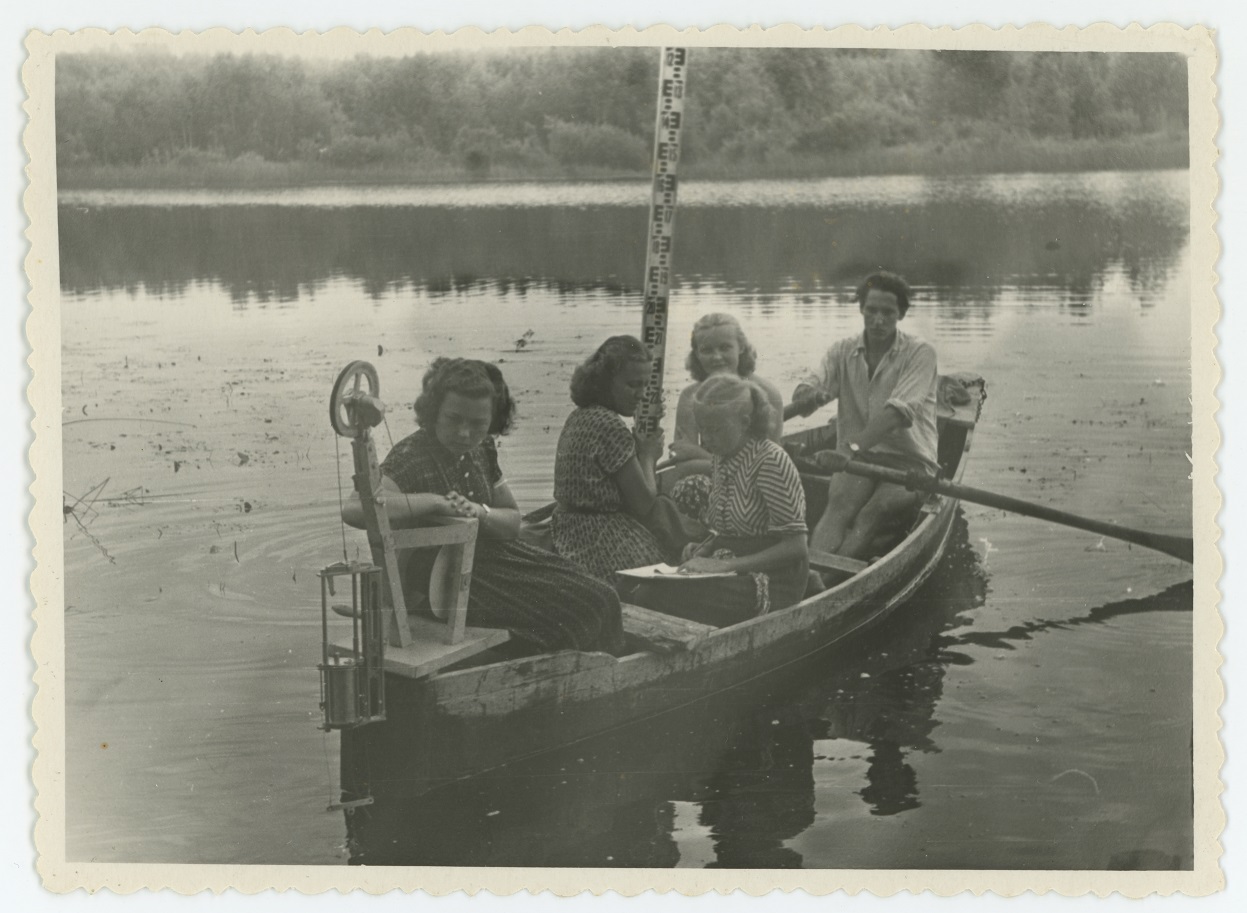Füsioloogiliste protsesside uurimine ja modelleerimine ning meditsiinitehnika arendused Tartu Ülikooli biofüüsika laboris
Research & modelling of physiological processes and equipment development in the Laboratory of Biophysics at the University of Tartu
DOI:
https://doi.org/10.15157/tyak.v46i0.14602Abstract
The Laboratory of Biophysics founded in 1961 was the first interdisciplinary
lab at the University of Tartu. Its foundation became
possible as the faculties of natural sciences at the university included
a Faculty of Medicine and cooperation between several units in the
field of biomedical engineering was already in place. In 1970, the
laboratory had 13 employees (3 physiologists, 2 mathematicians, 3
electric engineers, 1 chemist and support personnel) and was comparatively
well-equipped (electronic analogue computers EMU-10 and
MN-7, a magnetic tape recorder, Böhlau metabolimeter, rapid CO2
measuring device GUM-2, a nitrograph, a mass spectrometer for gas
analysis). As was typical for closed Soviet economy, a number of basic
devices for physiological research were designed locally by the staff
and built with the assistance of the experimental workshop of the
university.
This article includes a rich collection of photos illustrating the devices
originally built in the laboratory and their use in physiological
research (a 12-channel graphical recorder, ECG analyser, veloergometer,
blood pressure measuring devices, several modifications of
physiographs, etc.).
The analogue computers EMU-10 were mainly used for modelling
the human circulatory and respiratory system. For smaller modelling
tasks (e.g., electronic correction of the Böhlau metabolimeter
to reduce its inertia, improvement of the frequency response of the
skin blood flow measuring device, etc.), the MN-7 device was used.
A specific instrument (thermocoagulator) was developed for stereotactic
neurosurgery to treat patients with Parkinson’s disease. The
process of creating controlled lesions in the human brain was simulated
on the EMU-10 and then optimized.
The most significant field of study at the laboratory was continuous
non-invasive blood pressure (CNIBP) measurement, as well as
developing instruments for it. The method of indirect beat-to-beat
differential oscillometric measurement of the mean blood pressure
for every cardiac cycle was originally introduced by laboratory staff
members Vello Reeben and Maria Epler in the early 1960s and patented
in 1969. This method (known as the Reeben & Epler’s method)
was further advanced in the Laboratory of Biophysics and a corresponding
elaborate device (UT Physiograph) was built. Later models
of the UT Physiograph also provided heart rate, pulse amplitude,
respiration rate and skin blood flow signals in addition to continuous
blood pressure readings.
The original CNIBP measuring device became eligible for industrial
manufacturing, which was started in the Leningrad Krasnogvardeyets
Plant in 1972. Unfortunately, production soon ceased, as
the comparatively sophisticated pneumosystem was too complicated
for the producer. At the same time, more than 40 copies of the device
were built at the University of Tartu, ordered by leading scientific
centres of the USSR.
After Estonia regained independence, the Laboratory of Biophysics
was integrated into the Institute of Physiology and continued
work as the biophysics research group from 1993. Since then, active
cooperation was launched with the universities of Kuopio, Oslo and
Linköping and the UT Physiograph was clinically compared with volume
clamp monitors (Finapres, Portapres).
In open economic conditions, the need for manufacturing equipment
in the university workshops decreased and the research activities
of the biophysics group have mostly been related to the computer
simulation of oscillometric measurement, reducing the method’s errors
and improving its reliability.

